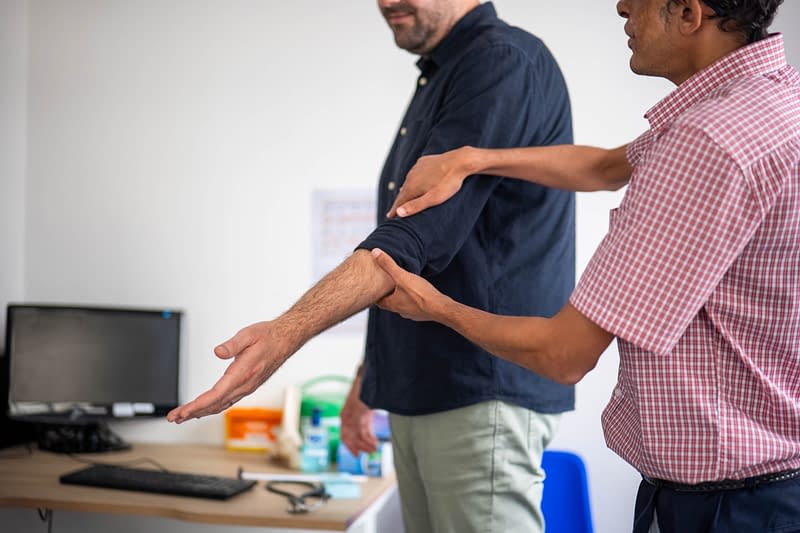The Current Gap in Women’s Health
Women’s health services in the UK have long lacked in funding, recognition and research. Despite making up 51% of the population, women often face a healthcare system historically “designed by men, for men”, with many female-specific conditions overlooked or trivialised (Winchester, 2021).This gender health gap has real consequences; women not only report poorer healthcare experiences but also lose out economically.
Under-serving women’s health leads to greater absenteeism and workforce dropout – more than 60,000 women in the UK are out of work due to menopause symptoms alone. A recent NHS analysis estimated that investing just an extra £1 per woman in obstetrics and gynaecology services (around £30m total) could yield over £319m in economic benefits (Gorham and Longham, 2024).
Improving women’s health is therefore both a matter of equity and an economic imperative.
This report examines the current gaps in NHS women’s health services – particularly in pelvic health and menopause care and explores the challenges women face in accessing care. It draws on the latest statistics, policy reports and case studies to highlight underfunding, under recognition and barriers to treatment and offers evidence-based solutions to bridge this gap.
The Underfunded and Under-recognised Landscape of Women’s Health
Only 2% of UK medical research funding is spent on pregnancy, childbirth, and female reproductive health, despite one in three women experiencing a reproductive or gynaecological issue (Cawthera, 2023).
In healthcare delivery, women’s health services have often been deprioritised. The NHS confederation reports that for every £1 invested in women’s health services, the NHS could save £11 in avoided costs. Yet these services remain chronically under-resourced (Berry and Mann, 2024).
The Impact of Delayed Diagnoses
Common gynaecological conditions such as heavy menstrual bleeding, fibroids, endometriosis, and polycystic ovary syndrome are widely prevalent, but they are too often normalised or dismissed as routine “women’s problems”.
Endometriosis is a painful condition that affects 1 in 10 women, yet it often takes an average of 7 to 8 years to receive a diagnosis. In fact, 40% of women must visit their GP more than 10 times before being referred to a specialist (Winchester, 2021).
Similarly, the severe symptoms of menopause are often overlooked, causing many women to suffer in silence or receive inadequate care. This lack of recognition means that women’s health issues have not been given the attention, priority, or resources—whether in policy, training, or funding—that their prevalence truly deserves.
The consequences of this under-investment are far reaching.
The Economic Cost of Poor Women’s Health
On average, women live longer than men in the UK but spend most of their lives in poor health (Winchester, 2021). Health conditions that disproportionately affect women often lead to lost productivity and financial strain. Each year, the economic cost of work absenteeism due to severe menstrual issues (pain, heavy periods, endometriosis etc.) is nearly £11bn in the UK (Gorham and Langham, 2024).
Unemployment due to untreated menopause symptoms costs the UK about £1.5bn annually, as thousands of skilled women leave the workforce because they cannot get the help they need (Gorham and Langham, 2024).
These statistics highlight that neglecting women’s health isn’t just a medical concern—it’s also a socio-economic issue.
Fortunately, awareness is increasing. In 2022, the government introduced England’s first women’s health strategy, aiming to correct “decades of gender health inequality” (Devlin, 2022). This 10-year strategy, alongside similar initiatives in Scotland and Wales, mark an important shift toward acknowledging and tackling the women’s health gap.
Pelvic Health: An Overlooked Priority
From 2013 to 2023, NHS wait times for women’s health services have significantly increased. In 2013, only 4.6% of women waited more than 18 weeks for treatment. By 2023, that number had surged to nearly 50% (Braithwaite, 2024). As a result, a growing backlog is leaving many women in unnecessary pain and disability for months before they can receive the care they need.
Urogynaecology conditions, post-natal conditions, and pelvic pain conditions affect millions of women, yet services for these conditions are stretched thin. This department has experienced the worst increase in waiting times among NHS specialties in recent years. By 2021, the gynaecology waiting list across the UK had grown to 570,000 women—the largest percentage increase of all elective specialties (Devlin, 2022). In England, the number of women waiting over a year for gynaecological care surged from just 66 before the pandemic to nearly 25,000 by early 2022 (Devlin, 2022). Notably, delays in care can cause pelvic health conditions to worsen, making them more difficult to treat. Untreated endometriosis or prolapse can worsen over time, significantly impacting quality of life and, in some cases, fertility (Devlin, 2022).
A key factor behind gaps in care is the historical tendency to downplay women’s pelvic health concerns. However, efforts to improve services are underway. The NHS Long Term Plan acknowledges postpartum pelvic trauma and incontinence as major issues and has committed to establishing perinatal pelvic health services across the country.
Government Policies and Their Role in Bridging the Gap
Pilot pelvic health services have been introduced across England, staffed by midwives and women’s health physiotherapists to support women during and after pregnancy (DHSC, 2023). In 2023, the Government announced £11 million in new funding, starting in April 2024, to establish a national pelvic health service. This initiative aims to offer all women pelvic floor assessments early in pregnancy and ensure timely postnatal care (DHSC, 2023). The service focuses on educating women about pelvic floor health and providing additional support for those at higher risk. Research indicates that implementing best practices can reduce severe birth-related pelvic injuries by 20% (DHSC, 2023).
Barriers To Care
Several common challenges in women’s healthcare hinder access to care, such as long waiting times and limited services. Another widespread issue is the feeling of being dismissed or not taken seriously by the NHS. In a government survey informing the women’s health strategy, 84% of respondents reported instances where they or a woman they care about felt ignored by a healthcare professional (DHSC, 2023). Women shared tens of thousands of personal stories about their symptoms being downplayed or labelled as “normal” despite their intuition that something was wrong. A lack of awareness and education further exacerbates these issues.
Bridging The Gap: Evidence Based Solutions
Closing the women’s health gap will require sustained effort on multiple fronts. An important step is to boost investment in women’s health and to ring fence funding for these services.
Experts recommend establishing dedicated, long-term funding for initiatives like women’s health hubs and perinatal pelvic health clinics, rather than relying on short-term pilot programmes (Berry and Mann, 2024). Given the high return on investment (ROI) of women’s health spending (estimated at £11 economic benefit per £1 invested) such funding is justified (Berry and Mann, 2024). In practice, this means allocating a specific portion of the NHS budget to gynaecology, women’s physiotherapy, and menopause services, ensuring they remain protected even during efficiency drives.
The creation of more one-stop women’s health clinics is a recommended solution to improve access. These hubs can bring together services for pelvic health, reproduction, menopause, and more, making comprehensive care more accessible.
Women’s Health Physiotherapy
For pelvic health, hubs should include women’s health physiotherapists, gynaecologists, urogynaecology specialists, continence nurses, and mental health support. Embedding pelvic health physiotherapy is especially cost-effective – early physiotherapy intervention for pelvic floor dysfunction can prevent progression to more complex issues like organ prolapse, sepsis from urinary retention, or kidney damage from untreated incontinence.
The POGP has emphasised that physiotherapy should be a cornerstone of Women’s Health Hubs, given its proven benefits and low cost (Berry and Mann, 2024). Integrating services within hubs also reduces the burden on patients to navigate multiple appointments – instead of separate referrals to gynaecology, urology, physiotherapy, etc., a hub can triage and manage care in a unified way. NHS England’s ongoing rollout of Women’s Health Hubs is promising, but expansion and acceleration are needed nationwide.
Primary Care Networks (PCNs) can also host ‘mini hubs’. PCNs have started employing First Contact Physiotherapists with women’s health training, enabling women to self-refer for pelvic floor issues without needing a GP referral. The goal should be to ensure that every local area has accessible women’s health services, whether within GP practice groupings or community clinics.
The Power of Awareness and Advocacy
Bridging the gap will not happen overnight, but it is firmly within reach. The solutions are clear: we need more financial, human, and infrastructural resources for women’s health services to reduce waiting lists and improve care.
We must educate and equip healthcare professionals with the knowledge and tools to address women’s health conditions effectively and empathetically. We must continue to listen to women’s voices, making them active partners in their care and service design. And we must challenge the biases that remain, whether in lab research or clinic rooms so that women’s health is afforded the same urgency and rigour traditionally given to other areas of medicine. By expanding specialist hubs, integrating women’s health into primary care, speeding up access to treatments like HRT or pelvic physiotherapy, and funding research into women-specific conditions, the UK can make good on the promise to “reset the dial” on women’s health.
The Future of Women’s Healthcare
Ultimately, closing the women’s health gap is about fairness and justice – about ensuring that being a woman is no longer a risk factor for receiving suboptimal healthcare. It is also about securing a healthier future for half of our population.
When women thrive, families, communities, and the economy also thrive.
The NHS’s founding principle was to provide universal care based on need, not gender or other characteristics. By tackling the shortcomings outlined in this report, we move closer to that ideal, building a health service that genuinely works for everyone. The task now is to maintain momentum and turn strategies into sustained action.
The women of the UK deserve nothing less than a health system that recognises and meets their needs with the excellence and compassion that has too often been denied.
With commitment and the evidence-based changes described, the long-standing gap in women’s health can finally be bridged.










